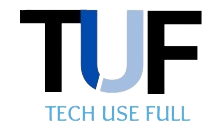Efficiency, speed, and quality are critical in the continuously changing world of software development. Today’s businesses must create high-quality software while preserving agility and cutting expenses. This problem has given rise to codeless automation, a revolutionary strategy that enables businesses to expedite their testing procedures without the use of voluminous coding. We will talk about the idea, its advantages, and the difficulties it presents, focusing on why it is crucial to contemporary software development.
The Concept of No-Code Test Automation:
No-code test automation, also known as codeless automation, represents a revolutionary approach to software testing. It enables organizations to create and execute test cases without the need for extensive coding skills. Instead, no-code test automation uses simple visual interfaces, like drag-and-drop applications and screen recorders, to let users easily design and automate test scripts.
No-Code Test Automation’s Principal Advantages:
No-code test automation provides many advantages over its code-based competitors, making it an appealing option for businesses:
- Better Use of Labor: No-code platforms democratize test automation by allowing non-coders, such as business managers and QA teams, to participate actively. This ensures that relevant stakeholders are involved in the testing process, freeing up technical resources for higher-value tasks.
- Faster Time to Market: With No-code tools, the time required to create and execute tests is significantly reduced. Non-technical employees can create tests in minutes, enabling organizations to release software faster.
- Higher Quality Software: No-code test automation facilitates seamless communication between non-technical employees and developers, leading to quicker identification and resolution of bugs. This results in higher-quality software.
- Alignment with Agile Methodologies: No-code test automation aligns seamlessly with Agile development methodologies, emphasizing rapid iteration and collaboration.
- Streamlined Application Development: It addresses the shortage of professional developers, often a bottleneck in development projects, by enabling non-technical personnel to contribute.
- Quicker Responses to Business Needs: No-code testing platforms swiftly translate business requirements into applications, reducing development time significantly.
- More Involvement from Business Teams: As no programming skills are required, business users with deep insights into business needs can actively participate in the testing process.
Challenges with No-Code Test Automation Tools:
While no-code test automation offers numerous advantages, it is essential to be aware of the challenges associated with these tools:
- Limited Functionality: Some no-code platforms may lack certain advanced features needed for comprehensive software testing, potentially limiting testing capabilities.
- Maintenance and Scalability Issues: Handling large and complex projects can be a challenge for certain no-code platforms, leading to maintenance and scalability concerns.
- Creating Complex End-to-End Tests: integrating no-code testing solutions with other development tools can be challenging, particularly if they are not designed to work together seamlessly.
- High Learning Curve: Despite their user-friendly interfaces, no-code testing platforms may still have a learning curve, requiring users to invest time in mastering the tool.
In conclusion,
No-code testing platforms like Opkey testing automation platform streamline software testing and accelerate delivery by empowering non-technical users. Opkey specifically reduces development time and costs while improving test coverage and quality. The intuitive Opkey platform requires no coding skills yet provides scalable and efficient software testing. Though there are challenges with no-code test automation also, yet its ease-of-use makes it accessible, allowing businesses to improve applications and respond faster to digital change.


